First train unveiled for Johor Bahru-Singapore RTS Link; service will run from 6am to 12am
There will be a total of eight trains when the RTS Link starts service at the target date of December 2026.
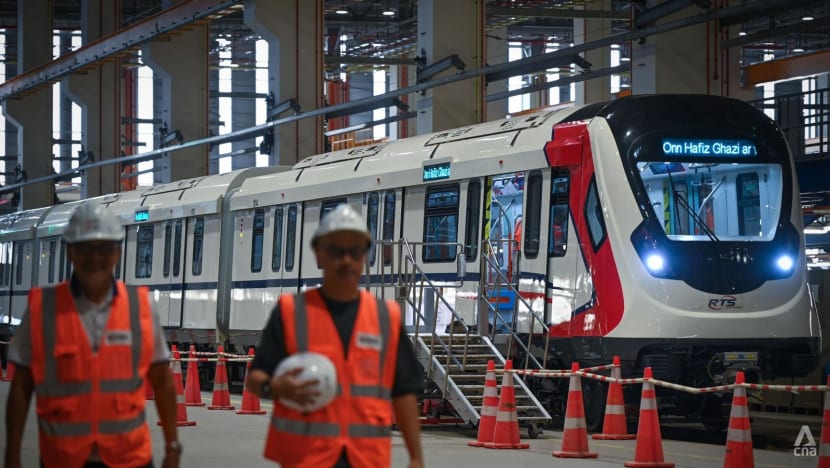
The Johor Bahru-Singapore Rapid Transit System Link train is a 4km rail shuttle service that will connect the Bukit Chagar Station in Johor Bahru to the Woodlands North Station in Singapore. (Photo: CNA/Syamil Sapari)

This audio is generated by an AI tool.
SINGAPORE: The Johor Bahru-Singapore Rapid Transit System (RTS) Link marked another milestone with the unveiling of the line's first train on Monday (Jun 30).
Manufactured by China Railway Rolling Stock Corporation (CRRC), each train will have a standing capacity of 607 passengers, and can carry up to about 1,000 passengers at peak hours.
The first trains will depart from each end of the line at 6am, while the last trains will depart at 12am each day. The line is expected to have a peak capacity of 10,000 passengers an hour in each direction.
The 4km journey between Woodlands North and Bukit Chagar in Johor Bahru will take about 5 minutes, with the shortest wait for a train being 3.6 minutes.
There will be a total of eight trains when the RTS Link starts service at the target date of December 2026, the transport ministries of Singapore and Malaysia said in a joint press statement.
The first train was assembled at CRRC's facility in China, and delivered to Jurong Port on Apr 3. Since then, it has been at the Singapore Rail Test Centre preparing for offsite system integration testing.
During this phase of testing, operator RTS Operations will check the integration between the train and other rail systems, most critically the signalling system, as well as platform screen doors and onboard communications.
Offsite testing will start in July and take about four months, before the train is moved to the RTS Link tracks for onsite testing with the seven other trains.
Of the remaining seven trains, four have been delivered to CRRC's facility in Malaysia's Batu Gajah and are being assembled there. This process will be replicated for the last three trains.
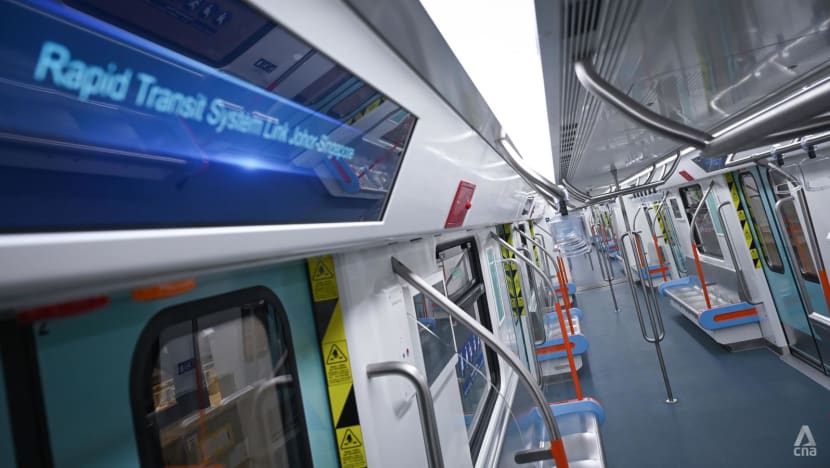
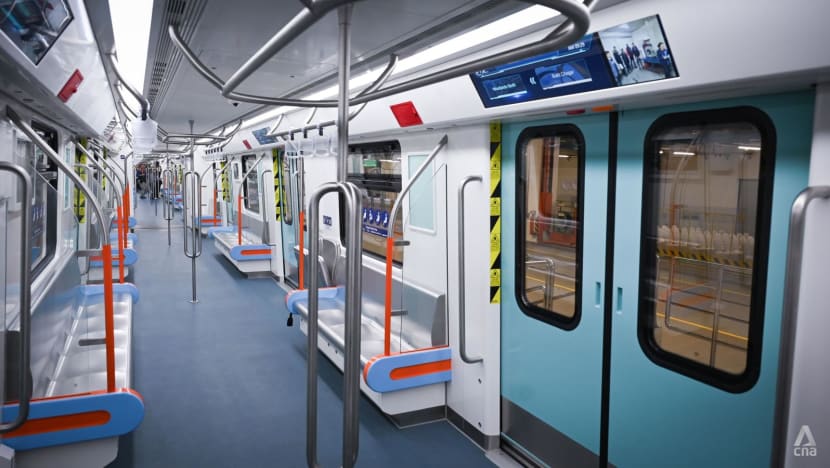
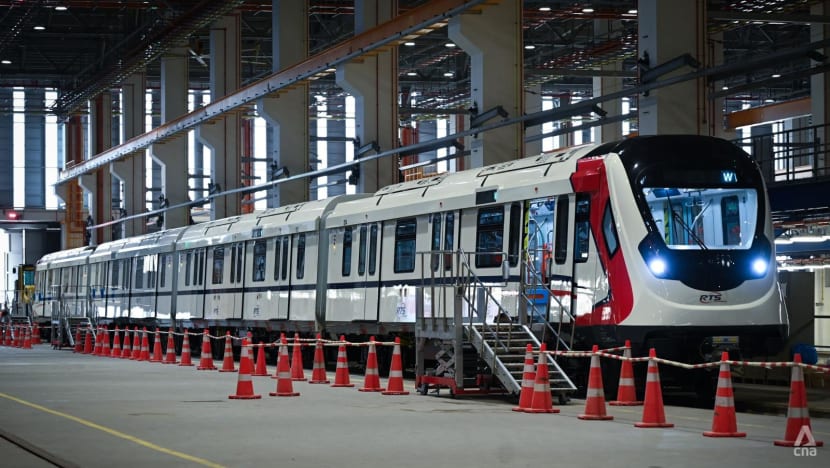
FARES TO ENCOURAGE COMMUTERS
Works to install the rail system are now about 56 per cent complete. When finished, the RTS Link is expected to be a major component of the Johor-Singapore Special Economic Zone.
Malaysia's Transport Minister Anthony Loke noted that the project was "up in limbo" after Malaysia's change of government in May 2018, but both sides managed to agree on a new arrangement to push it forward.
He added that in a world of increasing trade protectionism, the RTS Link showcased what could be achieved when countries work together.
"While in other parts of the world, people are busy setting up more barriers, here we are breaking down barriers, building more connectivity," he said.
Acting Transport Minister Jeffrey Siow, who was meeting his Malaysian counterpart for the first time since taking office, said the rail connection would generate shared economic and social benefits.
The RTS Link is meant to increase mobility, and in Singapore, there are no plans to reduce cross-border public bus services after the line starts running, he said.
Last week, Malaysian daily Harian Metro reported that the Shuttle Tebrau rail service connecting Johor Bahru and Singapore will end in 2027, within six months of the RTS Link starting operations.
Shuttle Tebrau is run by Malaysia's main rail operator, Keretapi Tanah Melayu. The journey takes about five minutes, and a one-way ticket costs RM5 (S$1.50) from Johor Bahru.
The one-way fare from Singapore is RM5 for Malaysians and S$5 for other travellers.
Asked about the RTS Link train fares, Mr Siow said these would be determined commercially by RTS Operations.
Mr Loke said the rail operator was in the midst of a market study to determine the right price that would encourage commuters to use the RTS Link.
Speaking in Mandarin, he later said that the fare should not be more than what it costs to cross the border on private transport like a motorcycle, including fuel and any fees to be paid along the way.
Mr Loke also said the operating hours may still be adjusted to factor in the working hours of commuters crossing from Johor to Singapore, who could currently be setting off as early as 5am.
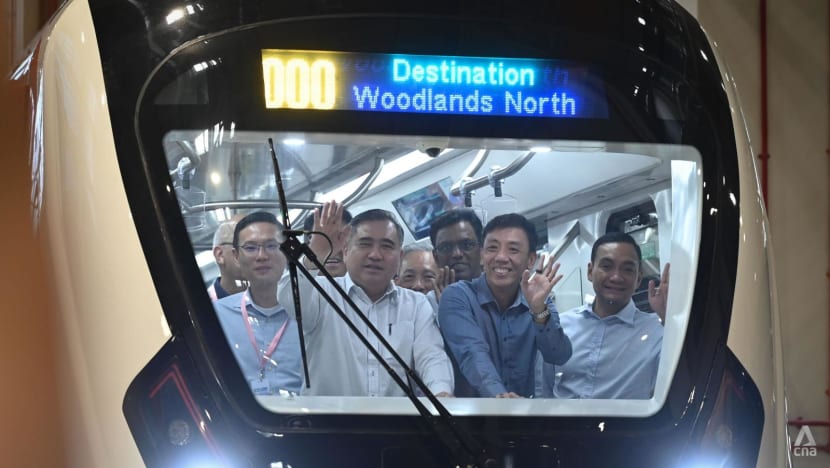
FIRST LOOK AT THE TRAIN
Media were given a preview of the RTS Link train by RTS Operations, a joint venture between SMRT RTS and Prasarana RTS Operations.
The driverless train runs at a maximum speed of 80kmh and is powered by a Grade of Automation 4 (GoA4) system, which refers to a system that runs fully automatically without any operating staff on board.
The deployment of staff on board the trains for other purposes, such as customer service, is still under consideration.
Each train is 76m long and 2.7m wide, and consists of four cars with three doors on each side. There are a total of 126 fixed seats and 16 pop-up seats.
When passengers arrive at the station to start their journey, they will pass through automatic fare gates with an open-loop payment system that accepts various forms of payment.
They will then pass through all the necessary immigration and customs checks at the station where they are boarding.
For example, passengers taking the RTS Link from Woodlands North will pass through Singapore's immigration checks, followed by Malaysia's, before boarding the train for Bukit Chagar.
This is to prevent the build-up of crowds at the destination station, where passengers can simply exit after disembarking the train.
Due to the short duration of the journey, passengers are expected to hold on to their own luggage, and there are no racks for storage.
In a first for trains in Singapore and Malaysia, RTS Link trains will feature a hearing induction loop system that allows passengers with hearing impairments to hear public announcements on the train.
By transmitting audio signals directly into a hearing aid, the system greatly reduces background noise and distortion. The move is meant to enhance safety and inclusivity on board.
Other security measures include cameras on the train, and boxing up of the areas below the seats, in order to reduce areas where objects can be hidden.
Editor's note: This article previously stated that passengers can exit the station after passing through fare gates. That is incorrect. There is no additional fare collection upon disembarkation. We apologise for the error.

















